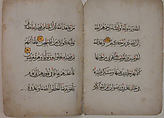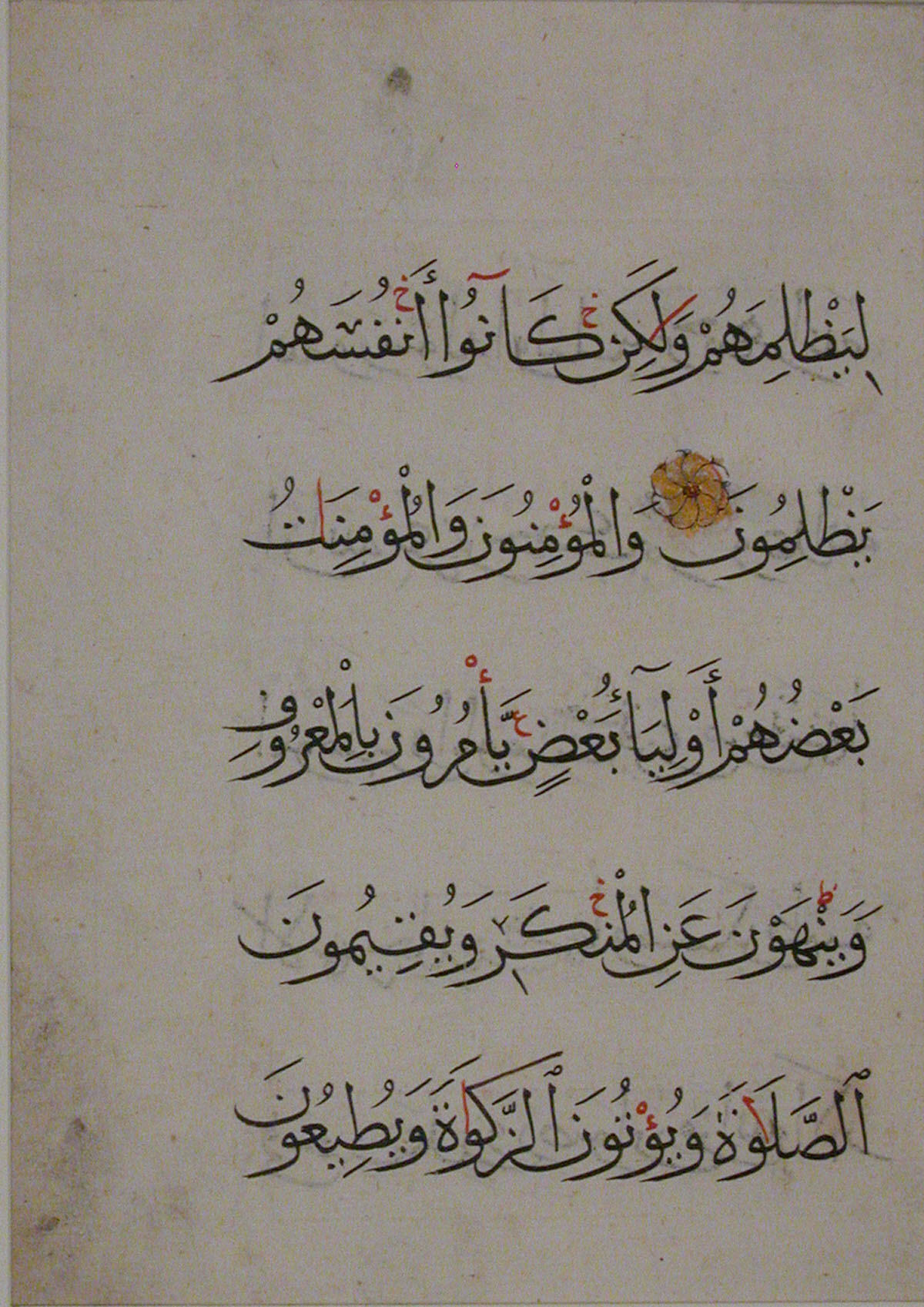Bifolium from a Qur'an Manuscript
Not on view
The favorite cursive calligraphies for the copying of high quality Qur'an manuscripts both in Egypt and Syria under the Mamluks were called thuluth, muhaqqaq, and rayhan. The latter two, a combination of which is provided by this example, are recognizable for their sharp edges and for the pointed letter ends that run flat just below the line. Seen here is the verso of the second of two conjugate leaves. Its text includes parts of verses 77 to 79 from Sura IX ("of the Immunity").
Due to rights restrictions, this image cannot be enlarged, viewed at full screen, or downloaded.
This artwork is meant to be viewed from right to left. Scroll left to view more.






